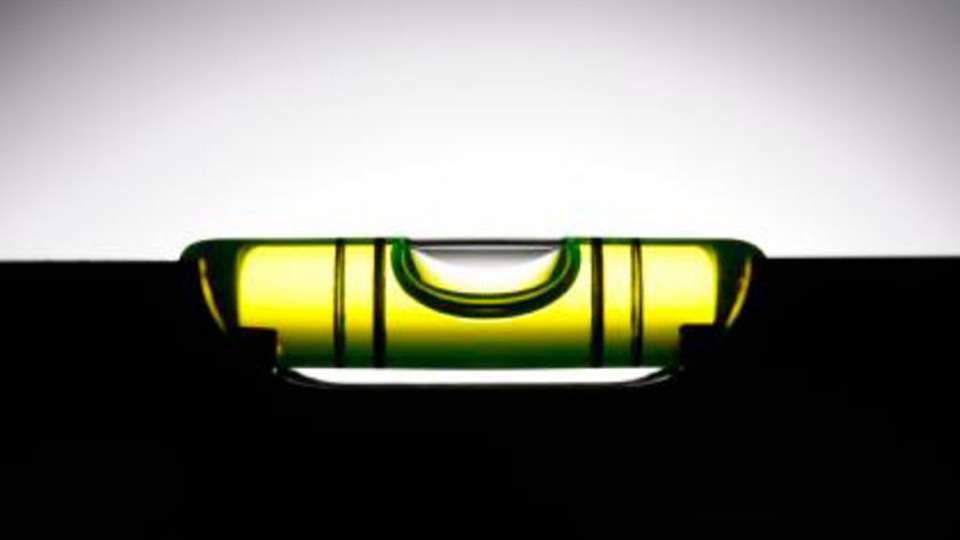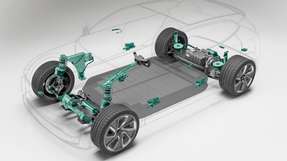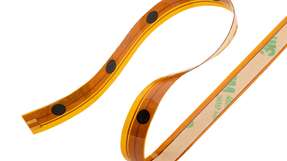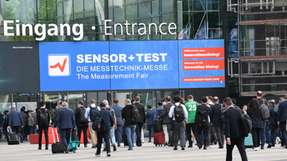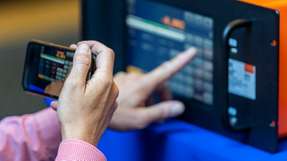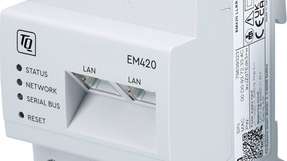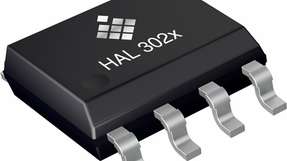Firstly, there are capacitive displacement sensors. In capacitive measurements the sensor and the measurement object form the electrodes of an electrical capacitor. When a constant alternating current flows through them, the amplitude of the AC voltage is proportional to the distance between the sensor und the measurement object. Capacitive sensors are extremely stable, and their resolution accuracy lies in the nanometer range; this is why they are preferred for highly precise applications. For instance in surgical operations, when a perfect view of the area of operation is essential. At this point a surgical microscope often supports the physician. The optical system of the microscope is attached to the long arms of a stand. To keep the microscope´s field of vision stable for the physician, the swivel joints must continuously be corrected. For this purpose the capacitive sensor capaNCDT is used. The system measures the distance to the reference plane which mirrors the movements of the stand´s arm in the swivel joint. If the displacement of the reference is too big, the control returns the stand´s arm to its original position. Compact construction and easy integration of the system into the existing design are the main advantages of this solution. It delivers a clear picture to the surgeon during the whole operation.
Fill level measurement in microtiter plates
In some cases the sensor technology even enables the transition from manual processes to automatic operations, e.g. in the medical laboratory. Here active substances for test series are manually filled into microtiter plates. The exact amount of the respective active substance is important, but it creates a challenge. If the microwell plates are filled automatically, the amount of the filling is automatically controlled, too. The small-scale series, typical in medicine, are manually pipetted, though. Normally random samples are weighed for this reason. But that´s not sufficient for the 100% quality test. For such applications the confocal distance measuring technology represents an appropriate solution. During the confocal-chromatic measurement process white light is segregated through lenses and focused vertically onto an object. The light reflected is conducted to the CCD array through a spectrometer: each position on the CCD array corresponds exactly to one wavelength and thus to the distance of the measurement object from the sensor. This technology insures measurements with a resolution in the nanometer range. The confocalDT sensors successively “scan“ the microtiters in the plate and measure the distances from sensor to the liquid with micrometer accuracy. Confocal standard sensors can be tilted and thus work reliably also with a big meniscus of the liquid. confocalDT permits measurement with all liquids. Miniature sensors with a diameter of 4mm or more can be arranged in one line to scan the entire width of the microtiter plate.
Positioning of the OR table
The wireSENSOR draw-wire sensors arrange for best possible positioning of the patient on the OR table. The wire of the sensor is wound on the drum on one side, whereas the other side is connected to the moving object. The movement caused by the extraction of the wire is transformed into an electrical signal by a rotary encoder. The construction of an OR table is modular and offers many possible adjustments for optimum positioning of the patient during the operation: height of the table, horizontal position and different angular functions, e.g. for head, torso and legs. Measuring technology is needed to detect the individual adjustable elements. For this purpose draw-wire sensors from Micro-Epsilon are ideally suited due to their especially small design, their high accuracy and lifetime. Typically up to five cable sensors are mounted into an OR table. Beyond standard sensors with a wire made of steel, there are also models with wire and attachments made of synthetic material, as they cause no interference during X-ray and MRT exposures. Besides draw-wire sensors, capacitive and confocal measuring systems for displacement and distance measurement, Micro-Epsilon offers optical micrometers, temperature and color sensors, laser sensors and magneto-inductive measuring systems for medical technology, pharmaceutical and biomedical technology.





